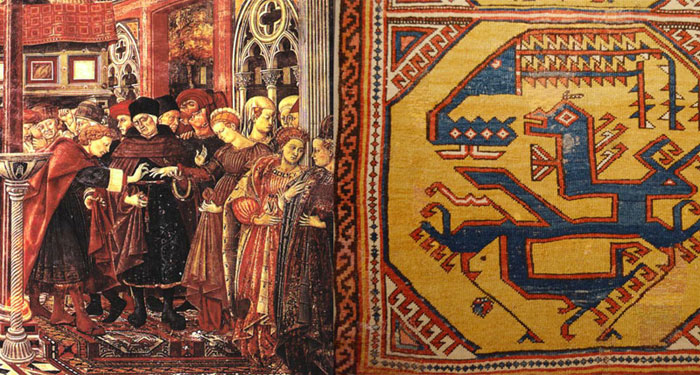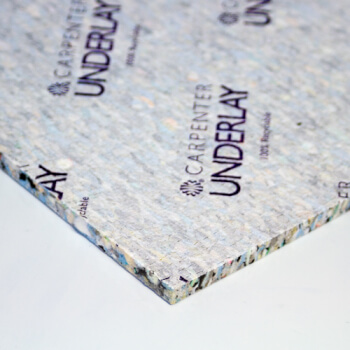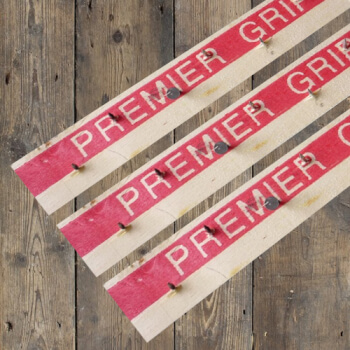5 More Fascinating Historical Carpet Facts
By Jim (10/10/2016)
We had a great time finding some fun historical carpet facts for you last time, so now we’re back with some more! Broaden your knowledge, impress your friends, and find out that carpet has had a far more interesting history than you may have thought...
1. Transylvanian Carpets And The Black Church
Image Source: Transylvania Rugs
In the town of Brașov (located in Transylvania - yes, it is a real place!) stands the ‘Black Church’ or Biserica Neagra. This huge gothic monument was blackened by a fire 1689 - but inside it is far more colourful, home to a treasure trove of wonderful woven carpets.
They are displayed in the traditional fashion as wall hangings rather than on the floor...after all, they are far too valuable to let people tread on them!
They are of a very particular style referred to as ‘Transylvanian rugs’ - however, despite the name they come not from Romania itself but from Anatolia in Turkey, or the Ottoman Empire as it was when they were made.
Trade between Romania and the Ottoman Empire was at a peak in the 15th-17th centuries, with Transylvania at the centre - rugs were a valuable export, and would often be donated to churches by rich parishioners. This was a true meeting of cultures, as the rugs were fashioned after Islamic prayer rugs. This is evident from the general design; traditional prayer rugs had a single ‘niche’ at one end - a part of the pattern forming a triangular shape, often with a mosque lamp depicted at the point - which would be directed towards Mecca whilst praying.
When Sultan Ahmed I issued a decree in 1610 preventing the sale of prayer rugs to non-Muslims, crafty weavers got around this by creating a ‘double-niche’ design, with points at both ends - no use for a devout Muslim but still able to fetch a good price from their Christian buyers! These days places like the Black Church and St. Margaret's Church in Mediaș keep these beautiful artefacts on display for tourists to enjoy.
2. Preserved In Paint
Image Source: WikiPedia
Sometimes, one art form can help to preserve another - remember that rather fetching portrait of Henry VIII from our last historical blog? He's standing on a ‘Holbien’ carpet, named after the artist Hans Hobien, who often depicted them in his paintings.
There are other instances of this in Renaissance art, and a few have actually helped us find out things we would never have know without them.
A particularly interesting example is that of the ‘Animal Carpets’ - like the aforementioned ‘Transylvanian Rugs’ these were woven in Anatolia in the Ottoman Empire, and depict heraldic and stylised animals, often in symmetrical patterns. Very few of these Animal Carpets still exist - in fact, there are only nine, and only two of those are complete, the rest being small pieces.

So how do we know the remaining carpets actually represent a style, rather than simply being random objects?
Thankfully the painters of the 14th and 15th century immortalised several examples in their work - pictured on the left is Domenico di Bartolo's ‘Marriage Of The Foundlings’, which shows a carpet similar to the ‘Dragon and Phoenix’ carpet on the right - the first identified Animal carpet.
3. Berber: A Carpet, A Language And A People
In your travels around the internet, you may have heard references to ‘Berber carpet’. This refers to a style and construction of carpet with a pile made of very tightly-packed loops of varying height, producing a textured finish, often light in colour with a random ‘flecked’ pattern.
But these mass-produced items are modelled after something far older.
The name ‘Berber’, derived from ‘Barbarian’, was bestowed in an uncomplimentary fashion by the Romans to the non-Arab inhabitants of North Africa.
This distinct ethnic and culture group contained (and still contains) many different tribes, each with unique traditions, but who shared a common heritage and spoke the ‘Berber languages’.
Far from barbaric, the Berber people (who called themselves ‘Amazighen’) have always been skilled farmers and craftspeople creating, among other things, beautiful hand-woven carpets.
These were produced, almost always by the women of the tribe, on hand looms using the distinctive ‘berber knot’, shaped rather like a figure of eight. These carpets, made with a thick pile, were mostly for bedding rather than flooring.
Although these days the ‘Berber style’ has been codified to mean one thing, true Berber carpet (still hand-made to this day) is greatly varied in colour and style, often containing motifs and symbols representing love, marriage, fertility, life and death. The meanings of some of the symbols have been lost, even to master weavers, but which are still beautiful to behold.
These days the Berber population has spread throughout the world but still has a significant presence in Morocco and Algeria; that means the culture has had a continuous existence in North Africa since the Iron Age - over 3000 years!
NB: For a far more scholarly approach to Berber carpets, check out Berber Arts!
 4. The Rya - Carpet Vs Cold Climate
4. The Rya - Carpet Vs Cold Climate
Image Source: Circa-1930 Vintage Swedish Pile Rug, Doris Leslie Blau
These days there is a big move towards Scandinavian or ‘Scandi’ interiors (check out our blog on contemporary style for more!) and one of the most recognisable elements is the thick shag-pile rugs.
The Scandinavians, particularly the Swedish, traded extensively with the Ottoman Empire (Bonus Fact: one of the aforementioned ‘Animal Rugs’, the Marby rug, was found in Jämtland in Sweden!) so they were well aware of the ‘Oriental’ types of carpet design and construction, but by the 15h century they had created their own entirely unique spin on the ancient artform.
Called a ‘Rya’ in Sweden and ‘Ryijy’ in Finland, these rugs were made to mimic the furs which would traditionally keep out the winter cold.
Made from sheep’s wool, they would be used, like the berber carpet, as a blanket, with the pile inwards and the pattern on the back. People also used them on walls to keep out drafts.
Beginning as merely practical items for insulation, from the 16th-18th century, as production techniques became more complex, ryas became things of beauty, eventually developing into the colourful floor-rugs we see today. Although most commonly they were decorated with abstract patterns with the focus on colours, there was some influence from the earlier Anatolian and Chinese carpets, including the use of the ‘Tree of Life’, representing family. Ryas were woven for special occasions, particularly for weddings, often containing the bride and groom’s initials in the pattern.
In the late 18th century a very different form of rug also emerged, the Rollakan, a flat-woven rug which often contained complex patterns of geometric shapes - this is similar to the style of the ‘Kilim’ rugs found elsewhere in Europe and the Middle East.
To this day both styles are still produced, both as bespoke products and en masse for certain well known retailers.
Another fun fact for you - there is actually a ‘Rya’ sheep, also known as the ‘Swedish Carpet Wool Sheep’ - very straightforward, those Scandinavians!
5. An Axminster for the Ottomans
Image Source: Sultan Mahmud II, WikiPedia
 You have probably noticed from both this and the previous blog that a lot of the most famous and beautiful carpets came from the Ottoman Empire.
You have probably noticed from both this and the previous blog that a lot of the most famous and beautiful carpets came from the Ottoman Empire.
Woven carpets were developed as early as 7000 BCE by the various nomadic peoples in the region that would later become Turkey; they needed woven fabric for various purposes, such as lining the floors of tents and protecting them from the hot desert climate - this necessity led to a great tradition of carpet making throughout the area, especially Anatolia. As we have seen, when the Ottoman Empire began to expand and flourish in the 16th century, rugs and carpets became a major trade commodity both within the Empire itself and for export all over the world.
In contrast, carpet making only became an industry in England in the 18th century, and even then did not flourish until the Industrial Revolution.
Perhaps the most famous British carpet manufacturer was Axminster. Founded by Devon weaver Thomas Whitty in 1755 and based in the town of the same name, it quickly became eponymous with fine products, fit for the aristocracy and even the royals.
Whitty was inspired by a Turkish carpet he saw at the Cheapside Market in London and with a bit of innovation (‘borrowed’ from Peter Parisot’s Fulham Factory, which employed workers from the Savonnerie Manufactory - you may also remember from last time!) and the help of his children, he created the first Axminster Carpet.
But it was in 1822 when this cultural exchange came full circle - none other than the Sultan of the Ottoman Empire himself, Mahmud II, requested a carpet from Axminster. Despite being a bit of a moderniser, Mahmud II still had a taste for good old-fashion opulence, and the carpet was bought for £1000 (closer to a million in today’s money!) and depicted the constellations, moon and sun - it was 74 ft by 25 ft in size, or 22m x 7m - that’s over 150 square metres!
There have been many attempts to find this masterpiece; we know it was destined for one of the many palaces built for the Sultan and his relatives - the mostly likely the Esma Sultan Mansion near the Bosphorous strait, but this was almost destroyed by fire in 1941 it may be lost forever.
That’s all for the history of carpets- at least for now!
And thanks to modern technology, carpet is now more various, more hard-wearing and above all more affordable than ever! You don’t have to be a Sultan or a King to get some lovely products from top UK manufacturers - have a look and find out what will go in your palace:
And remember, any questions, just get in touch - in the meantime, take care!
Until next time then - all the best!
Enter your required size for our most accurate pricing and availability.










